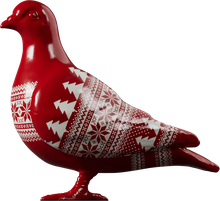Social History — Late 18th century-early 19th century
Bowl
Small shallow and straight-sided pewter bowl or porringer. The pierced side handle is formed from a decorative scroll and crest. It probably dates from the late 18th or early 19th century. This one was used at the Mount Street Workhouse where it would have held the gruel or soup served at mealtimes to inmates.
In Oliver Twist, Charles Dickens famously describes the inadequate food portions given to workhouse inmates: ‘The room in which the boys were fed was a large stone hall, with a copper at one end, out of which the master, dressed in an apron for the purpose, and assisted by one or two women, ladled the gruel at meal-times; of which composition each boy had one porringer, and no more – except on festive occasions, and then he had two ounces and a quarter of bread besides. The bowls never wanted washing. The boys polished them with their spoons till they shone again; and when they had performed this operation…they would sit staring at the copper with such eager eyes as if they could have devoured the very bricks of which it was composed.’
The Mount Street workhouse was originally built in 1725. It was enlarged in the 1780s, to provide work, food and accommodation for approximately 700 people, making it one of the largest workhouses in the country. It eventually closed in the early 1870s due to overcrowding, with paupers transferred to other workhouses.
- Category:
- Social History
- Object ID:
- 65.47/43
- Object name:
- bowl
- Object type:
- Artist/Maker:
- —
- Related people:
- Related events:
- Related places:
- Production date:
- late 18th century-early 19th century
- Material:
pewter
- Measurements/duration:
- H 40 mm, L 213 mm, D 142 mm (overall)
- Part of:
- —
- On display:
- —
- Record quality:
- 100%
- Part of this object:
- —
- Owner Status & Credit:
Permanent collection
- Copyright holder:
digital image © London Museum
- Image credit:
- —
- Creative commons usage:
- —
- License this image:
To license this image for commercial use, please contact the London Museum Picture Library.

